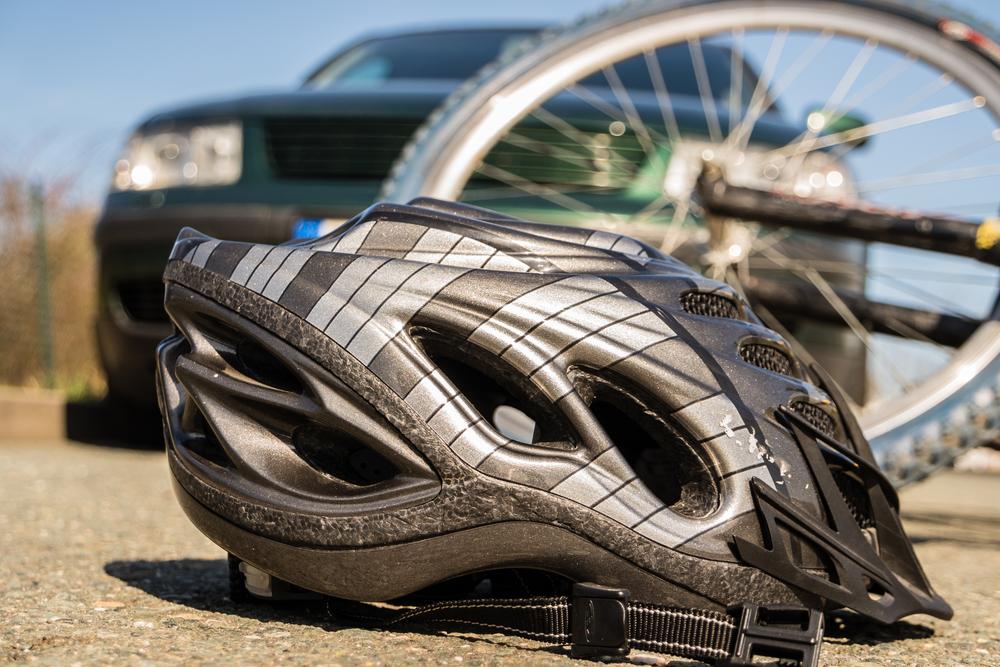How To Know If Your Bicycle Accident Claim Would Be Successful

Bicycle accidents happen a lot. There were about 467,000 bicycle related injuries recorded in 2015 alone. Considering, how little bicycles are used compared to other means of transport, that’s a lot of bicycle accidents.
You know what’s worse? Very few of these accidents are ever reported to the Police. Even worse, very few victims of this number take steps to get compensation for their injuries. And the shocker? Less than 20% of those that try to get redress end up with satisfactory compensation, despite overall medical costs and productivity losses of $10 billion.
Frankly, it can be a hard life for persons that have been involved in bicycle accidents. If you’re fresh from one of those, you’re probably enduring a difficult period. Several thoughts are most likely going through your mind right now. How did it happen? Didn’t that other driver see me? Why was that big pothole on the road?
No matter what caused it though, there’s no escaping the truth that bicycle accidents can leave you with some big bills after they motor through. Since you didn’t cause the accident, someone has to be responsible for the situation you’re in.
But as you read earlier, there aren’t very many bicycle accident claims that end up getting the compensation the victim deserves. In fact, there are many situations where the victims may not even get anything from the court. This is because bicycle accident claims can be pretty hard to prove.
Why are bicycle accident claims difficult to prove?
There’s a lot that goes into proving bicycle accident claims in this day and age. It can be pretty tough going for a number of reasons.
- It’s often your word against the other driver’s. Unless you have eye witnesses or very good evidence, the claims process is usually about you saying what happened and the other driver saying something entirely different happened.
- It can be difficult to tell exactly what happened. Even when you think you saw it all, there’s a pretty high chance that there’s a lot you didn’t see, which will affect how the claims process goes.
- Expert evidence counts for a lot. Evidence from medical experts, behavioural experts, human factor experts and even bicycle accident experts can materially affect the facts as you think they happened.
So there’s clearly a lot that you may think is settled but turns out to be far from settled when tested in court. They can and often do affect the success of bicycle accident claims.
But despite this, there many victims of bicycle accidents that succeed in their claims. How do they end up successful? That’s what you’ll learn in this article. Next up are the elements that indicate you have a good claim on your hands.
Elements of a bicycle accident claim
It doesn’t matter if you’re claiming compensation from the other driver’s insurer or through a lawsuit, you need to show certain elements to be present in your claim before you will be entitled to compensation. The elements are:
Fault / duty of care
Someone is usually the cause of an accident. It could be because they were not paying attention to the road, driving above the speed limit or simply doing something the road laws say they shouldn’t be doing. This is the element of fault.
You would generally need to show that the driver of the vehicle or other road user was at fault. It is this element of fault that shows they were in the wrong, not you. And this is pretty important because, if you were the one at fault, your chances of a successful claim are pretty much shot. Even if you were only partly at fault, it could seriously dent your chances of obtaining decent compensation.
If the accident was caused due to other factors like poor road maintenance, faulty traffic lights or even absence of a road traffic official where there should have been one, you’d be looking at the element of a duty of care.
A duty of care is simply a responsibility to do things that reduce harm to you or not do things will harm you. Whoever has a duty to maintain the roads must do their job and if they fail to do it, then they’ve breached the duty they owe you, as a road user.
Damage
Generally, if you’ve suffered no harm, you would not be entitled to compensation even though the other party was at fault. It’s usually required that there be some element of damage done to you personally or to your property.
If your bicycle has been damaged in the accident, then there’s clear harm. If you have also suffered injuries in the crash, this element would be proved. Although, the injuries need not be strictly physical. If you have been psychologically affected by the accident, it also qualifies as injury.
However, you would need to show some evidence of the injuries to your person or damage to your bicycle. You would need to prove physical or psychological injuries by obtaining a medical report detailing how you have been affected. Damage to the bike can be proved by pictures or even presenting the bike itself.
Proximity
Even if you are able to show that you suffered damage after the actions of the other party, you would also need to show that the default of the other party was the proximate cause of your injury or loss.
This basically means that the other party must have directly caused your injuries or loss. For instance, if a car hits a bicycle and damages it while moving at top speed, then there’s direct damage.
In other situations, it may not be so clear or direct. For instance, if the speeding car hits another car that then veered out of the road and hit your bicycle, would the damage be direct? Often, the key to determining whether the damage was direct or not is to ask: Would the accident have happened if the other party had not been at fault?
If you have all these elements present in your case, then you’re looking at a claim that has good chances of success. But it doesn’t end there. You still need to do the groundwork for a successful claim.
Preparing for a successful claim
A good case is rarely enough to ensure your bicycle accident claim will be successful. There’s a lot you still need to do to ensure you’re properly set up for a successful claim.
- Document and review the facts: Don’t rely on only what you felt happened. Talk to people that were at the scene of the accident, go over what you felt happened and write it all down while it’s still fresh in your memory. This can help ensure that you capture the little details that will count when it’s time to prove your case.
- Make sure you’re still within time: If you fail to file your lawsuit within the time prescribed by law, there’d be no compensation for you, no matter how great your claim is. The statutory period is generally about three years from the date that the accident happened. So you need to keep track of time.
- Gather everything you need: See a doctor early so you can get checked out. The medical report will be very important to your case so you need to get it sorted out early. If you made a report to the Police at the time that the accident happened, you can also request to get a copy of the report. It will be a useful account of the facts of the accident so it’s not just your word against the other driver’s.
- Find yourself a good lawyer: While there’s no law that says you must retain a lawyer; the bare truth is your chances of a successful claim are that much better if you get yourself a good bicycle accident attorney. If they’re experienced, then they’ve done it all before and know exactly what you need to do.
Parting words
Yes, bicycle accident claims can be difficult to establish. But with the information provided in this article, you now know exactly what your case needs to be successful.
If you have any questions about the information in this article, please don’t hesitate to comment below. And if you’d like to know more about making a successful bicycle accident claim, we’d be happy to talk to you. You can schedule a free consultation here.

Mr. Fine was born in New York, New York, and was raised in the northeast, where he studied sociology at Colby College in Waterville, Maine. He then graduated with honors from the University of Florida Levin College of Law in 1976. In law school, he was a member of Phi Kappa Phi Honor Society, was inducted into the Order of the Coif, and graduated in the top 10 percent of his class. Mr. Fine was admitted into the Florida Bar in 1976, the United States District Court for the Middle District of Florida in 1977, the United States District Court for the Northern District of Florida in 1991, and the United States Court of Appeals 11th Circuit in 1982.
